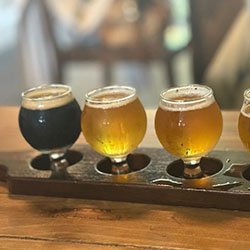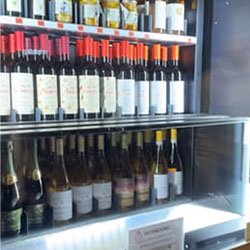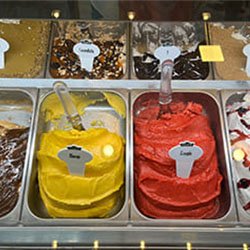In Liguria we like to consider this area as ‘our backyard’…so close for a weekend getaway and yet so far away from the coast and from Genoa city’s hustle and bustle.
Today Barolo is produced in several municipalities in the Langhe region, made from one of the most prestigious grapes in Italy, Nebbiolo, which also gives rise to other important denominations such as Barbaresco wine.
The name Nebbiolo derives from the Latin word nebbia (fog) both because the flowering bunches seem enveloped in a delicate blanket of fog, and because the rolling Piedmontese hills, especially at sunrise on cold autumn mornings are often covered by a thick blanket of fog.
Nebbiolo, despite having a great name, has a small homeland. Only some wine-growing regions of northern Italy (mainly Piedmont, but also Valle d'Aosta and Lombardy) have a centuries-old history of producing prestigious wines from this vine.
Of course, Nebbiolo vines have been planted in other parts of the world, especially in recent times, but the authentic and highly appreciated character of the wine is the result of the adaptation of the grape to the environment over the centuries and does not forgive having been planted elsewhere, never producing wines with an elegance and complexity comparable to those from its northern Italian homeland.
Barolo was born in a particularly suitable area, which extends between Cuneo and Asti. It is a hilly area, covered with woods and fields, where vines found a home living in synergy with the surrounding area. In 2014 the area was listed as a UNESCO world heritage site.
Initially, Barolo was produced as a sweet rather than dry red wine. Things changed in the mid-nineteenth century, but there are different versions of this change in style.
One version tells that supposedly Count Camillo Benso di Cavour, in an attempt to improve the quality of the wine, invited a French winemaker who created the dry version of Barolo, just as we drink it today.
This dry version of the wine proved to be much appreciated by the Piedmontese aristocracy, so much so that it gave rise to the catchphrase: “Barolo, the wine of kings and the king of wines.” However, this version of events has recently been disputed by some wine historians who argue that Cavour had actually asked for the help of an Italian winemaker rather than a French one.
But Langhe is not just wine.
The city of Alba represents the heart of the Langhe. Alba is renowned for its white truffles, the most prized in the world, which are used to sprinkle the region's typical dishes. The price of the Langhe truffle varies depending on market availability and type, but can reach up to 4000 euros per kilo for the prized white truffle.
The famous International Alba White Truffle Fair takes place every year in the city and the city of Alba is also home to the Nutella factory. In fact, most of the hazelnuts from the surrounding crops are gathered here to make the famous spreadable cream.
The city has a medieval layout, with its towers and fortresses and the Cathedral make it a truly beautiful destination.
The best times of the year to visit the Piedmontese Langhe are late spring and autumn when the grape harvest fills the days.
From September to November we also witness the transformation of the landscape and its colors: the leaves of the vines and surrounding trees become yellow, golden, red and every hill changes appearance.
































































